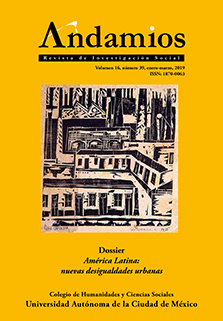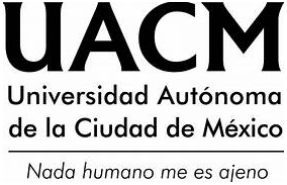Ontogénesis y filogénesis del travestismo inuit: del feto, el chamán y la figura intersticial del tercer sexo en la sociedad inuit
DOI:
https://doi.org/10.29092/uacm.v16i39.683Keywords:
Género, inuit, travestismo, transgénero, chamanismoAbstract
En su texto De feto a chamán: la construcción de un “tercer sexo” inuit, Saladin d’Anglure explora el concepto del tercer sexo como una noción que tensiona los límites de las categorías del binario de género occidental; aquel esquema que divide y opone lo femenino a lo masculino. Esta categoría de tercer sexo es sostenida a través de diversos paradigmas y prácticas sociales inuit, concebidas justamente para denominar al tercer sexo y con ello darle un lugar, cabida y aceptación cultural. Así, se vislumbra en la sociedad inuit la existencia de un paradigma terciario respecto de las categorías de género conocidas en occidente, permitiendo con ello repensar las definiciones culturales concernientes a lo transgénero, al travestismo y al chamanismo.
Este enfoque expresa un modelo ontogenético (concerniente a las condiciones de existencia y desarrollo del individuo singular) y filogenético (pues refiere, desde una perspectiva cultural, a las formas de transmisión social entre las generaciones), que sitúa al tercer género inuit en un contexto tempoespacial singular, planteándose como una figura intersticial entre hombre y mujer, entre lo femenino y lo masculino.
Downloads
Downloads
Published
Issue
Section
License
This Journal is licensed under Creative Commons Mexico 2.5. It is allowed to reproduce and disseminate the contents of the Journal for educational or research purposes, not for profit, as long as they are not mutilated and cite the source (Andamios, Revista de Investigación Social) and the author.
The copyright of the articles published in Andamios, Revista de Investigación Social are transferred by the author(s) to Universidad Autónoma de la Ciudad de México when the originals have been accepted, so that they are published and distributed both in the printed and electronic versions of the Journal. However, as established by law, the author(s) retains their moral rights. The author(s) will receive a form of assignment of copyright that they must to sign when their original has been accepted. In the case of collective articles, the signature of one of the authors will suffice, provided that the latter has obtained the consent of the others.
Authors may use the material of their article in other works or books published by themselves, with the condition of quoting Andamios as the original source of the texts.
The articles contained in this publication are the responsibility of their authors and do not compromise the official position of Andamios, Revista de Investigación Social of the Universidad Autónoma de la Ciudad de México.


